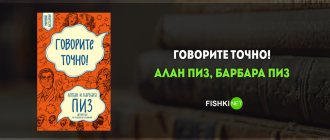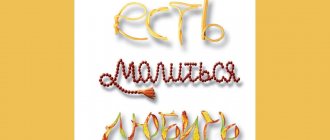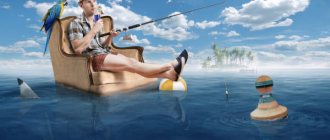Hello! Lyudmila Redkina is in touch. Give me three tries and tell me the most difficult age. Of course, 99% of you will immediately remember teenagers. And this is the correct answer! Why is it difficult? Yes, because there is a restructuring of all systems in the body, starting with physiology and ending with psychology. At the age of 10 to 16 years (plus or minus a year), the child changes externally and internally. Everyone goes through a process of restructuring the body. And here’s one problem - many teenagers are faced with non-acceptance of themselves, rebel, do not know what they want from life and what everyone wants from them. Therefore, I have selected popular psychology books for teenagers that will help you understand this age and sort out your life, if you are one of them. So, the list of the best books for teenagers is in front of you!
Thomas Armstrong “You can do more than you think”
Most teenagers have at least once experienced uncertainty and comparing themselves to their peers. And this comparison was far from being in their favor. And this is such a sensitive age that the resulting complexes can remain for life. Therefore, the author wrote a wonderful work for those who sometimes get lost among successful peers and doubt their successes.
Thomas Armstrong is a teacher with extensive experience. The material presented convinces us that everyone is smart in their own way, beautiful in their own way, successful in their own way. In an unobtrusive manner, Thomas emphasizes that there is an inner beauty of a person and it is not only external regalia that makes him beautiful.
"Emotional Intelligence 2.0"
Author: Travis Bradbury, Gene Greaves
Reasoning on the currently popular topic of emotional intelligence. The authors introduce the concept of EQ instead of the well-known concept of IQ.
Squeeze: if you are a wonderful person and successful in some ways, but you have low emotional intelligence, you will not see progress in life, like ears without a mirror. Below are instructions on how to improve your EQ. The tips are given in a form that is easy to understand and easy to work with.
Despite all its odiousness, this book should be considered a stepping stone to something greater. Having mastered it, you can slowly move on to the classic works of Carnegie and Goleman, which will complete your education in this topic.
Maria Surkova “Ages 14 and older: tips and life hacks”
This is an amazing masterpiece. It was written by a very ordinary teenager. The teenage girl used her age very skillfully - she wrote in the book everything she dreams about, what she does, why she is lazy. Here people like her will find answers to their many questions. And even if they don’t receive answers, they will know for sure that they are not alone with their torment, doubts and situations.
The author emphasizes that her goal is to convey her feelings and emotions, a little experience, and not moral teachings and morals, which teenagers hate. This book will be interesting to read for everyone from 14 to…
"High school. The worst years of my life"
Author: James Patterson, Chris Tebbetts
The book tells the story of a sixth-grader who is simply fed up with school - he considers it an outright prison. In order to somehow diversify the sluggishly dragging gray everyday life, he begins to play his own game, awarding himself points for various hooligan actions.
Moreover, the hero himself is by no means a lone ranger fighting against the whole world. But just a confused, embarrassed and vulnerable teenager, wanting attention and looking for himself in life.
There is a lot of humor in the book, mostly sarcastic, sometimes a little aggressive. But, nevertheless, she extremely accurately conveys all the emotions of a teenager.
Pay attention to the illustrations, which perfectly complement the material in the book and are quite worthy of being an independent work.
Aja Myrok “Why me?”
A relevant book on the psychology of communication, especially in modern society. It touches on such an unpleasant topic - bullying. The relevance for teenagers is reinforced by the fact that the book was written by a child who went through this. After all, children are often silent when faced with this problem.
This is a great practical guide to dealing with bullying. The author independently overcame this problem and became an order of magnitude higher than her peers morally. She was able to defeat them and herself, achieving success in her favorite activity.
"7 Habits of Highly Effective Teens"
Author: Sean Covey
American Sean Covey's work is interesting, although it has too much of his country's do-it-yourself ethos. So you get up in the morning and say to yourself: “I don’t like this moment in my life (weight, shyness, myopia, grades at school - underline what is necessary), and I can change it.”
The book makes you think about the positions we occupy in life and the goals we set. Teenagers often become depressed; they feel like there is simply no way out. Meanwhile, it is always there. You just need to look from the other side.
In addition, the book teaches how to resolve conflicts without bending to the situation, but also without resorting to aggression. And this is an important quality in a modern, violent world.
To understand the whole essence of the book, you need to know English. Even in the best translation, many Americanisms are simply not understandable. By the way, parents will probably be interested in the books of Covey Sr. (also a venerable psychologist).
Ken Watanabe “Learning to Solve Problems”
This book has a very interesting history: at first it was aimed at a narrow circle of readers - teenage schoolchildren. It very easily describes the principles of correct problem solving so that students can think critically. But very little time passed and the book has already become a bestseller among the adult population!
This is truly a unique work that helps business sharks control the work of the company, change, and ordinary schoolchildren learn to take responsibility for their lives and change the world in small steps.
"Secret power. The Introverted Teen's Formula for Success" Susan Cain, Gregory Mohn, Erica Moroz
One of the values teenagers have is fulfillment in society. Sometimes guys, especially introverts, have trouble fitting into a group and making friends. A self-development book from Susan Cain will come to the rescue, which covers all areas of teenagers' lives where interaction with others can be difficult. The formula for success has been found!
Being an introvert does not mean being shy. This is a significant difference! Introverts can be shy, but there are also shy extroverts.
Vladimir Antonets “Simple questions”
Well, I couldn’t ignore this book. Knowing how inquisitive children can be and how they can lead to complex dead ends with their simple questions, I confidently declare that this work is a salvation for many parents.
But I immediately draw your attention to the fact that the questions raised are completely different, so sometimes the answers need to be read in a language that is more understandable for a teenager. The book is similar in topic to an encyclopedia, but is written in an easy and relaxed manner. A wide variety of questions are raised here: the diversity of colors of the world, the number of human fingers, blood type, why money, sleep, honey are needed, and so on.
“Let's break through! How to deal with problems"
Author: Andrew Matthews
The book by an Australian psychologist positively radiates optimism, although it does not glow in the dark. In general, Andrew knows how to express his thoughts in completely unhackneyed phrases. It is rare to find writers who so easily transfer the emotions that overwhelm them into text.
In addition, the author cannot be denied a sense of humor. If you are too lazy to read, you can just scroll through for the pictures. A common sadness for all books by foreign authors: many features can only be really understood if you speak English at a sufficient level.
Sean Jackson "From Here To There"
If your teenager has nothing to do and is diligent, this book will keep him engaged for a long time. It hides labyrinths that cannot be crossed. This is such an anti-stress. Here the teenager will see works of art from different centuries, and even “walk” through them with his own hand. He will wander through the streets, avenues, and village paths. Fascinating journeys through the castle, towns and beautiful landscapes await him.
The book is suitable for creative children who are interested in the historical heritage of people.
"Flexible consciousness"
Author: Carol Dweck
From the first pages it is clear that the book belongs to the pen of the teacher. And a teacher - no less - at Stanford University. The work will appeal to those who prefer to think things through, analyze them, and then act. Lots of theory, not much practice.
Some teenagers note that the book is difficult to read, but at the same time emphasize that the information presented in it is extremely useful. The work is perfect for those who have decided to do deep work on themselves, when the main, most severe problems have already been resolved.
Reading a book also makes sense if you are on good terms with your parents and can discuss what you read with them afterwards.
Irina Chesnova “How to become an adult?”
This interesting book can be read from the moment you enter school. But in adolescence it becomes more aware. What do children dream about? Yes, of course, become adults! And the author helps you understand: what exactly does this adulthood consist of? The book describes the principles of communication, friendship, resolving conflicts and difficult situations, and overcoming difficulties.
Here the child gets acquainted with the basic qualities of an adult: independence, self-confidence, decision-making, responsibility.
"Be the best version of yourself"
Author: Dan Waldschmidt
A book about the most ordinary and familiar people who managed to achieve success. Like Armstrong's work, this is essentially a motivational book. But Be the Best Version of You is less theory and more practice. In addition, Waldschmidt is more extreme.
A great chance to finally get off the couch or from behind the computer and start doing something worthy. Suitable as a life-affirming kick for those who are going to create something, but “tomorrow” never comes.
The motto of the book could be the phrase “it’s enough just to want to go further than others.” But seriously, success is generosity, kindness, plus discipline and the ability to clearly measure risks. The format of the book is such that it can be read in an hour. And the book tells you how to find an hour in your “busy” schedule.
Kirill Balashov “What, what, what are our boys made of?”
When boys have a conscious desire to be strong like the Hulk, courageous like Steven Seagal, confident like Tom Cruise, we can safely say that the period of growing up is approaching. Especially when a neighbor took a fancy, a classmate became interested, then it was time to learn some nuances of male behavior that I had not thought about before.
The book describes in detail and simply friendly advice to boys that will help them easily overcome difficulties and become confident.
"Survival Course for Teens"
Posted by Dee Snider
A kind and instructive book that would have been useful to each of us when you yourself were a teenager at 14-15 years old. The portrait of an excellent psychologist and musician Dee Snider leaves parents in shock: what, one wonders, can a strange guy with earrings in his ears and a leather jacket painted with skulls teach?
Oddly enough, this outwardly defiant character explains in sufficient detail that promiscuity, including same-sex sexual relations, is not good. It’s not good or cool to get involved with alcohol or drugs (both in youth and later).
Overall, the book is great. But to really enjoy it, you need to understand the specifics of the 80s. The style is simple and understandable, and largely ironic.
Although the book itself is quite vintage, and Snyder looks frankly old-school compared to modern psychologists, it is still worth reading. At least in order to better understand how our parents thought, what they faced and what they would like to protect us from.
Trainings for preschoolers
Preschoolers love to play such games, but their attention is rather scattered. The teacher should conduct at least 3 training games in one lesson. But every game should have a specific goal.
Exercise “The Dragon Who Bit Its Tail”
To play this game, it is better to turn on funny music. The children stand in a line one after another and place their hands on the shoulders of the child standing in front. The baby who stands in front (Drakosha's head) tries to catch the one who stands behind (Drakosha's tail). This “tail” should try to dodge the “head”.
This exercise will help preschoolers get rid of their fears and relieve nervous tension.
Game "I am your friend"
This game teaches children to empathize, help each other and develop a sense of empathy.
The point of the game is for the teacher to introduce a new friend to the children. It could be some kind of animal or even a toy. You can take a teddy bear and make up a short story. For example, “this little bear went for a walk in the forest and got lost. Now he doesn’t know how to get home and he’s very sad...” Next, give the teddy bear to the child so that he can tell him something nice, take pity on him and support him. Then pass the toy to the next child and so on in a circle. Motivate the children to tell the bear that no one will hurt him, that he is among friends and that soon he will go home to mom and dad.
“What are you, Blob?”
Children love creativity very much. This is both the development of imagination and a surge of energy. And through creative tasks you can help your child get rid of aggression and fears.
Place a sheet of white paper, gouache paints and brushes in front of the child. Give your child the opportunity to choose the color he likes best. Many psychologists draw conclusions about the psychological state of the child. If the baby chooses dark shades, it means he is depressed and something is gnawing at him. Let your child dip the brush into the gouache and then spray it onto a clean sheet of paper. If your child wants to color this blot a little, let him. Then fold the piece of paper so that the design is printed on the other side. Now invite your child to fantasize and ask what or who he sees.
Exercise “Control your emotions”
It is extremely important to teach your child to cope with negative emotions. There are certain psychological trainings that do an excellent job of this task.
Remind your child often that when he is angry or wants to hit someone, he should stop, inhale and exhale, close his eyes, count to 10, smile and open his eyes. Calmness will drive away anger and any irritation.
Tell your children that they will become truly adults when they learn to manage their emotions.
Trainings for primary school students
Psychological training for primary school children is extremely important. Such games and exercises help the child cope with internal problems. Over time, the child gets used to it and can control them independently.
Children 7-9 years old are recommended to do:
- acting technique
- relax
- diagnostic techniques
- art therapy
- role-playing games
Exercises of this kind simulate various situations that a child faces and help him consider different ways of behavior.
Exercise "Barometer"
Before starting the exercise, the teacher should introduce the children to a real barometer. Tell the kids why they use it and offer to measure their mood. If the baby clenches his palms tightly, it means he is in a bad mood today; and if the palms are wide open, then the child feels great.
Game "What do you like to do"
Children love this kind of games very much. They are very useful and quite interesting. Children learn something new about each other. The essence of the game is that the child shows other children what he likes to do in his free time. In this case, you cannot use words, but everything must be shown with gestures. As soon as one of the children guesses what the first child likes to do, the next one takes his place and tells with gestures about his hobbies.
Game "I like.."
All children sit in a circle. The one of the children who starts the game turns to the neighbor on the left and says the phrase: “I like...”, and then the child should give some kind of compliment. For example, you can say how beautiful your eyes, hair, hands are, praise your sense of humor, or say how friendly your friend is.
Game "Two Rivers"
Let the children line up in one column and now they are a big river. This river spills into two small rivers. The teacher should place two children at the beginning of the river on opposite sides. The rest of the kids should take turns, either behind the first kid or the next one. In this way, children learn to create subgroups.
Game “Make Princess Nesmeyana Laugh”
All the guys sit near the wall, and a chair is placed in front of them. One of the children sits on a chair. Now he is Princess Nesmeyana. The other children must make the Princess laugh by talking about her virtues. Each child takes turns saying something unusual, kind and funny to the Princess. As soon as the Princess smiles, the next child takes her place on the chair.
Exercise “Support me”
All the guys stand in a circle. One of the guys stands in the center of the circle. The teacher should explain to the children that the one who stands in the center keeps his back straight and his legs together. The guys around him stretch out their arms in front of them and prepare to catch the one standing in the center. It is important that there is a distance of 20-30 cm from the hands to the baby in the center. As soon as the baby in the center begins to fall in any direction, the guys must catch him and put him in his place. The point of the exercise is to teach the child to trust others, and the children in the circle must live up to the expectation and catch the falling one.
Game "Warmth of Good"
All the guys stand in a circle and take each other’s hands. The point is that each participant conveys warmth to another child standing next to him through a light handshake. When the game begins, the first child lightly shakes hands with the neighbor on the left, who shakes hands with the neighbor on the left, and so on down the chain. When the last participant shakes hands with the one who started the game, you can close everyone's eyes and start the game again.
Shimi Kang "Way of the Dolphin"
This work is more for adults. Every parent dreams of their child being happy. However, not everyone understands what is actually needed for this. Some allow a teenager absolutely everything, others, on the contrary, turn on a dictatorship. Sometimes it seems to parents that the most important thing is to instill in their child certain qualities at any cost so that he can reach the top. However, the writer is a specialist in child psychology and talks about the need to educate, first of all, a harmonious and self-confident person, capable of setting goals and achieving them.











